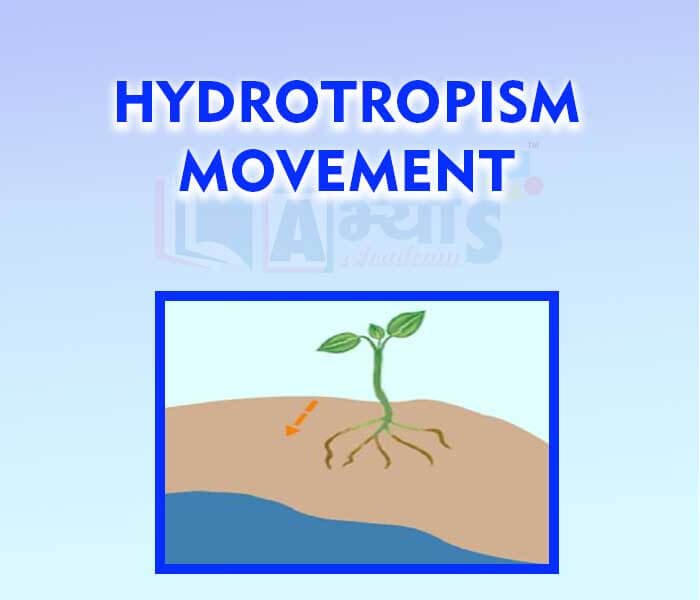Hydrotropism Movement










Hydrotropism Movement
The growth of plant parts towards or away from water is called hydrotropism. Roots are positively hydrotropic, i.e., they grow towards water in the soil. The positive hydrotropism of roots is stronger than their positive geotropism .Due to hydrotropism, the roots of roadside trees often block leaking sewage drains. The growth of stem away from the water is an example of negative hydrotropism.
Experiment :
We take two glass troughs A and B and fill each one of them two -third with soil. In trough A we plant a tiny seedling. In trough B we plant a similar seedling and also place a similar seedling and also place a 'clay pot' inside the soil. Water the soil in trough A daily and uniformly. Do not water the soil in trough B but put some water in the clay pot buried in the soil. Leave both the troughs for a few days. Now, dig up the seedlings carefully from the both troughs without damaging their roots. We will find that the root of seedling in trough A is straight. On the other hand, the root of seedling in trough B is found to bend to the right side.
If we plant a seedling inside a pot and water it daily from only right side then the root of plant will grow | |||
| Right Option : B | |||
| View Explanation | |||
The growth of plant parts towards or away from water is called _______________________. | |||
| Right Option : B | |||
| View Explanation | |||
If the roots of a plant are positively hydrotropic, then they will _______________ | |||
| Right Option : A | |||
| View Explanation | |||
Students / Parents Reviews [10]
A marvelous experience with Abhyas. I am glad to share that my ward has achieved more than enough at the Ambala ABHYAS centre. Years have passed on and more and more he has gained. May the centre flourish and develop day by day by the grace of God.

Archit Segal
7thMy experience with Abhyas is very good. I have learnt many things here like vedic maths and reasoning also. Teachers here first take our doubts and then there are assignments to verify our weak points.

Shivam Rana
7thMy experience with Abhyas academy is very good. I did not think that my every subject coming here will be so strong. The main thing is that the online tests had made me learn here more things.

Hiya Gupta
8thIt was a good experience with Abhyas Academy. I even faced problems in starting but slowly and steadily overcomed. Especially reasoning classes helped me a lot.

Cheshta
10thAbhyas is a complete education Institute. Here extreme care is taken by teacher with the help of regular exam. Extra classes also conducted by the institute, if the student is weak.

Om Umang
10thAbout Abhyas metholodology the teachers are very nice and hardworking toward students.The Centre Head Mrs Anu Sethi is also a brilliant teacher.Abhyas has taught me how to overcome problems and has always taken my doubts and suppoeted me.

Shreya Shrivastava
8thI have spent a wonderful time in Abhyas academy. It has made my reasoning more apt, English more stronger and Maths an interesting subject for me. It has given me a habbit of self studying

Yatharthi Sharma
10thIt has a great methodology. Students here can get analysis to their test quickly.We can learn easily through PPTs and the testing methods are good. We know that where we have to practice

Barkha Arora
10thBeing a parent, I saw my daughter improvement in her studies by seeing a good result in all day to day compititive exam TMO, NSO, IEO etc and as well as studies. I have got a fruitful result from my daughter.

Prisha Gupta
8thIt was good as the experience because as we had come here we had been improved in a such envirnment created here.Extra is taught which is beneficial for future.

